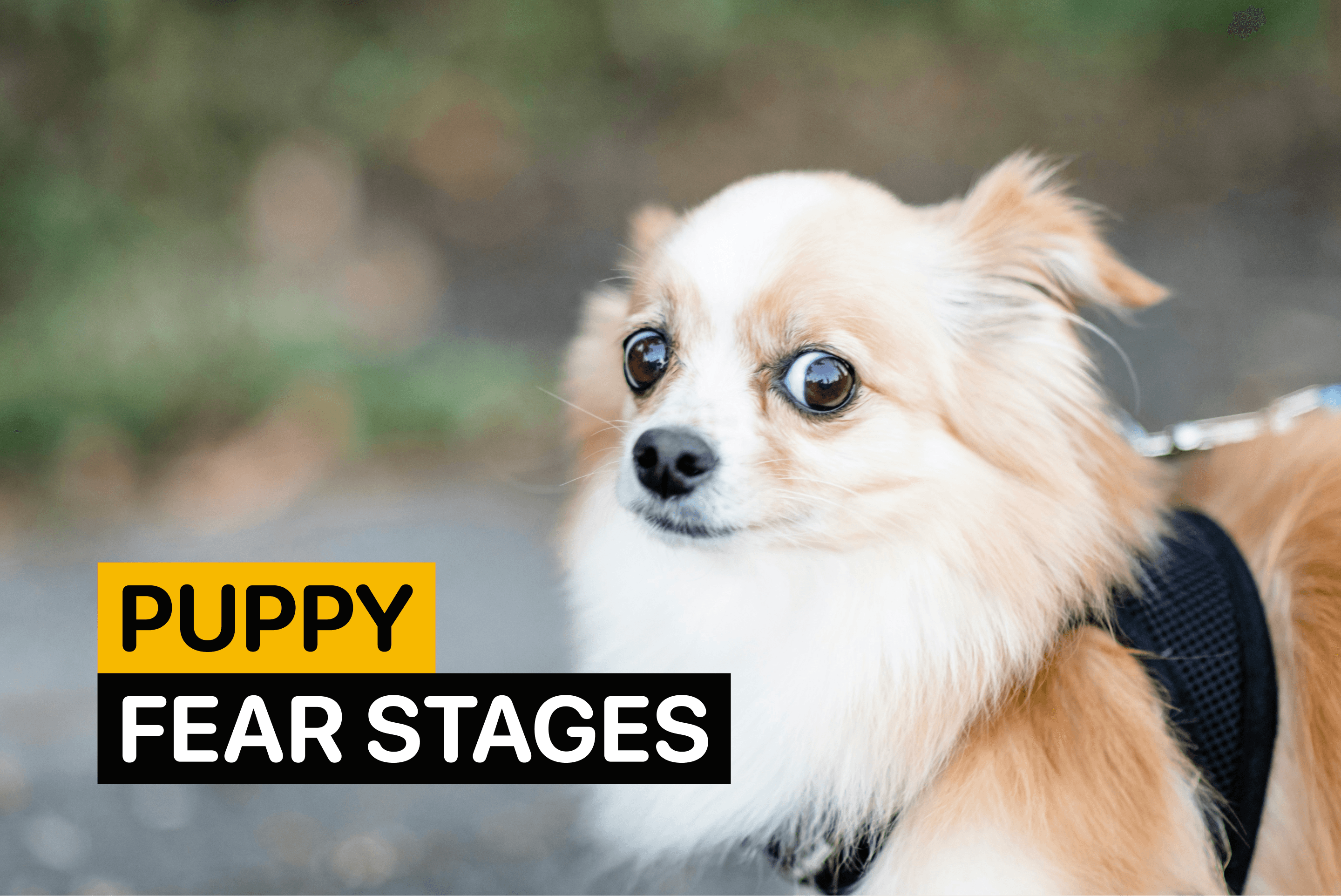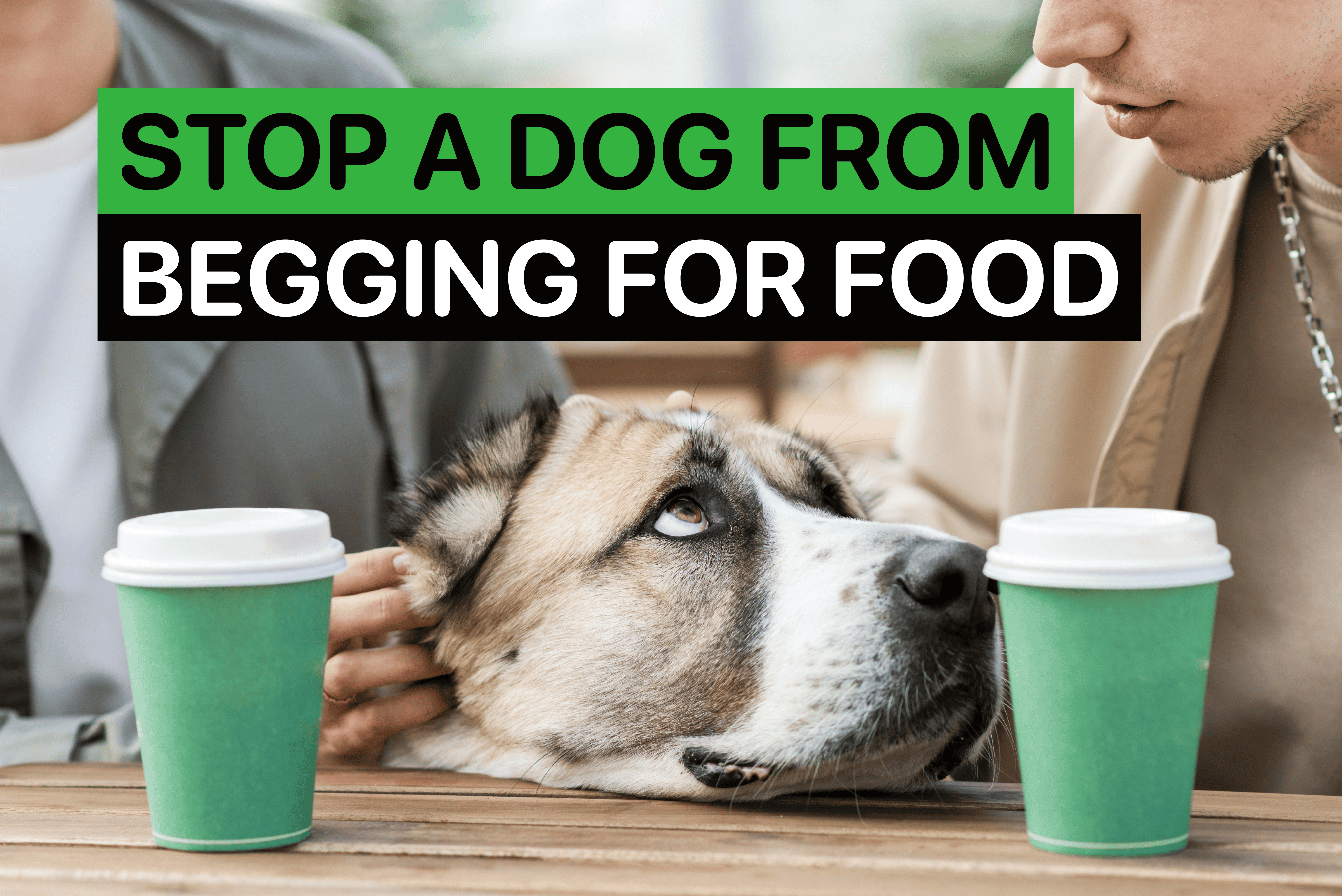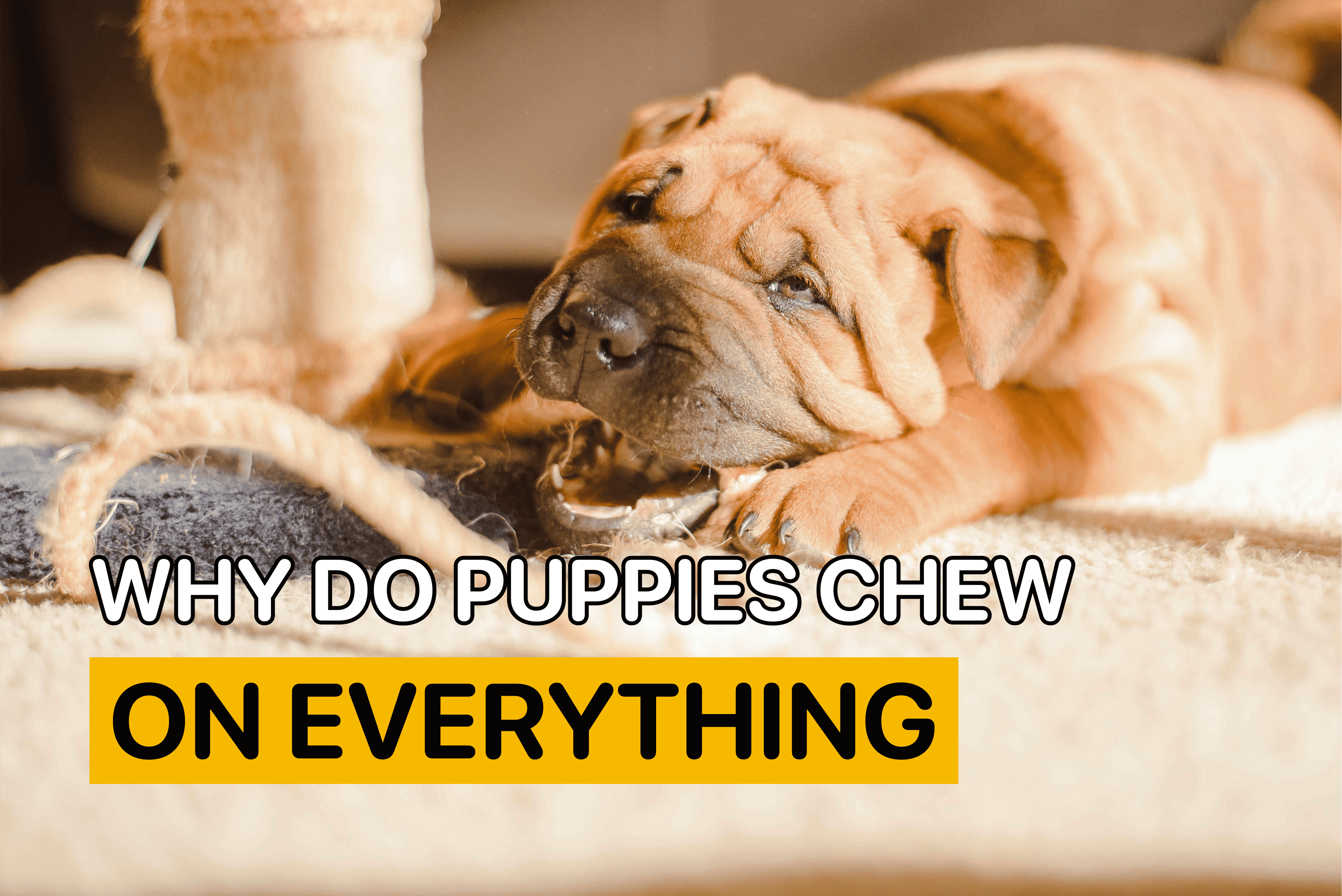How to Get a Dog to Stop Whining: Change It in 3 Steps

By
Woofz Team Updated on |Reviewed by
Karen PiwinskiA dog whining can drive you up the wall. We get it. However, try to look at it from another perspective – your pet's sounds are attempts to communicate their feelings, needs, and emotions. Like barking, growling, or howling, whining is a way to get a message across.
For some dogs, though, this behavior becomes excessive. If your pup whines too much, this blog post is exactly what you need. Let’s discover the reasons behind this habit and how to get your dog to stop whining.
Why Do Dogs Whine a Lot? 5 Common Reasons
Young pups are notorious for their whining habits. It’s a natural instinctive reaction to their need to get their mother’s attention. So, later, when they transition to your household, they start whimpering to make you stop whatever you’re doing and respond to their request.

Let’s break down the common reasons for the behavior and how you can better decode its hidden motive.
1. Attention-seeking whining
Canines thrive on human attention. It fulfills their natural desire to be a part of a social group. Don’t be surprised if your pup starts to whine excessively while you’re busy doing something. In such instances, treat this behavior as their desperate cry for quality time together.
2. Request for a desired object
You can be surprised at how much a canine can communicate with their voice and body language. An attentive owner may notice situations when their pup whines to get something from them. Be it a walk or a treat, you may even find your dog whimpering while maintaining eye contact with the object they want to get.
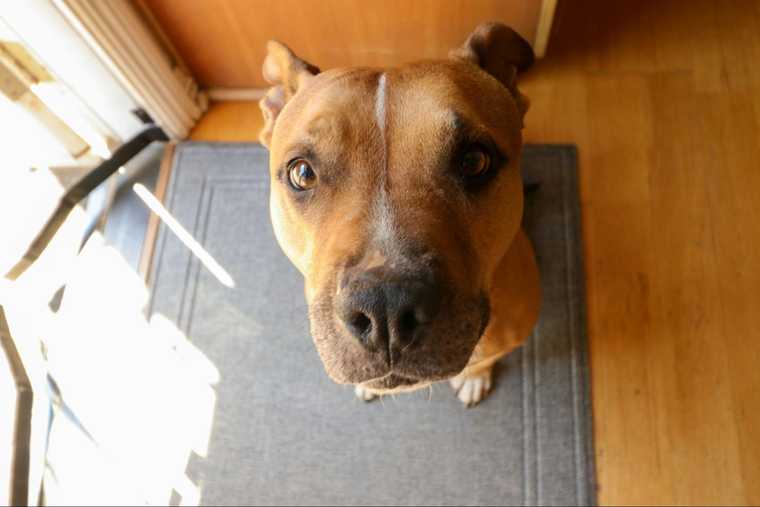
3. Showing their emotions
Whining is one way a canine conveys a range of emotions. You can commonly hear “bored,” “excited,” or “scared” whining. To interpret it correctly, you must analyze the behavior in a broader context and consider other signs and their body language.
When a dog whines out of excitement, they usually pair it with excited running or vigorous jumping. However, a bored dog's vocalizations signal a lack of stimulation differently. You may often notice your pet combining whimpering with sighing to make you pay attention to them.

Scared or anxious dogs can also resort to whimpering to communicate their altered emotional state. When a canine is afraid, they may vocalize while showing other appeasement body language. You may notice them whining and lip-licking, yawning, tucking their tails, or flattening their ears. This way, our companions are trying to demonstrate to others that they’re not threatening.
4. Alert Mechanism
Many dogs whine rather than bark to let their owners know something in their environment is scary. This could be a person approaching you, an animal or insect, or a suspicious object. In such cases, vocalization is an effective tool to inform you about potential dangers. Read more in article about critical signs of stress in dogs.
5. Sign of physical discomfort
Canines might whine when they’re in pain or not feeling well. They do it for multiple reasons, including getting your attention and calming themselves down. If you suspect whimpering is triggered by physical discomfort, consult a vet immediately to determine the cause.
How to Teach a Dog to Stop Whining in 3 Steps
Though whining is natural and perfectly normal behavior for young pups, sometimes, as they grow, they can get fixated on it. This often happens when owners reward the habit with treats or pay attention to the pup. As a result, your dog connects the dots – being loud means a desired outcome.
If you suspect your dog whines to seek attention and this behavior is getting out of control, you must act on it and teach them to stay quiet.
Step 1: Ignore whining
This method works best for dealing with attention-seeking whining. Before you proceed with this step, ensure your pup’s basic needs are met and they’re physically healthy. You don’t want to accidentally overlook a situation when your pet is scared or hurt.
1. Completely ignore the behavior. First, stop responding to your dog’s whimpering and instruct all your family members to follow the same approach. Avoid eye contact, touching, or petting your pup in response to their whining. You can even turn away or go into another room to show that you’re ignoring this behavior.
2. Wait for the pup to become quiet. Next, give your pup time to calm down and understand that whining doesn’t achieve the desired outcome. Once they quiet down, reward them with a treat or start interacting with them to show that calm behavior is acceptable.

Step 2: Teach your dog to tolerate alone time
Since whining often stems from boredom, it’s okay to train a puppy to spend time alone without demanding attention. To practice alone time with a pup, you must have a designated confined area (you can use a crate or a dog-proof room) and some treats to reward proper behavior. You can start training as soon as a puppy arrives in your household.
1. Place a pup in a crate or other confined area. As they don't have a habit of being alone, they will probably start whining the moment you leave the room. Wait for a while, letting the puppy calm down, and then re-enter the room.
2. Praise and reward quiet behavior. Once you return, pet, cuddle, or treat the pup to show that quiet brings benefits. Start with short periods of absence and gradually increase the time you spend away. With patience and consistent training, the dog will learn that your absence isn’t permanent and that staying quiet results in positive interactions with you.
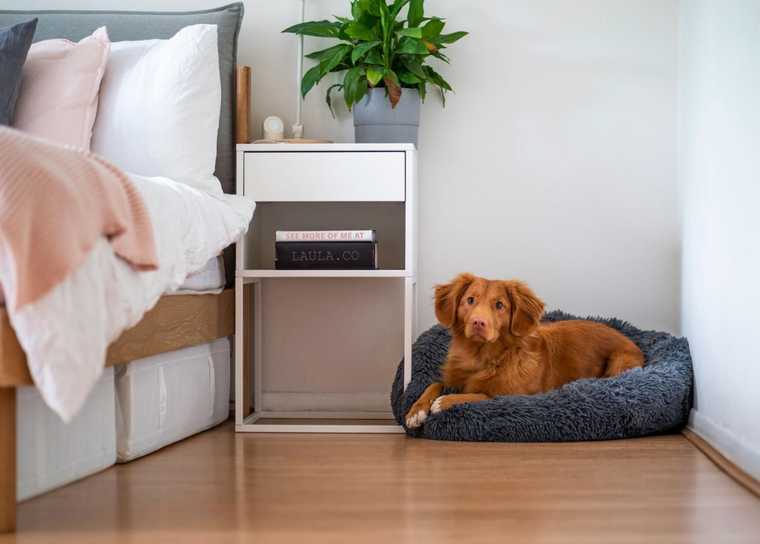
Step 3: Train staying quiet on command
Finally, you can teach your dog to respond to a verbal cue, “Quiet,” to modify their behavior in different situations. You can achieve this result by catching when you notice the times your dog stays calm and rewarding them for the behavior. This method is easy to implement as it reinforces a canine’s natural behavior.
1. Notice the times your dog stops whining. At this point, you must pay close attention to your dog’s behavior. When your pup stops their whining and calms down, you mark the behavior (use a clicker or say “Good”) and reward it. This way, you show them that you approve of being quiet.
2. Teach them to stay quiet longer. Next, you should teach your dog to remain calm for extended periods. Stop giving the treat as a reward immediately when they get quiet. Start waiting 1–2 minutes to make them regulate their emotions for a period of time.
3. Add a verbal cue. Finally, start using a command word (the most popular is “Quiet”) before offering your dog a treat. This way, you help them understand that following your verbal command brings them a reward. Eventually, you’ll stop the dog from whining once you give the command.

Is it Ever Okay to Respond to My Dog’s Whining?
You should approach each instance of your dog whining with individual attention. It’s vital to evaluate the situation and the context surrounding it objectively. Above, we’ve described the steps for attention-seeking whining, which can become excessive or annoying.
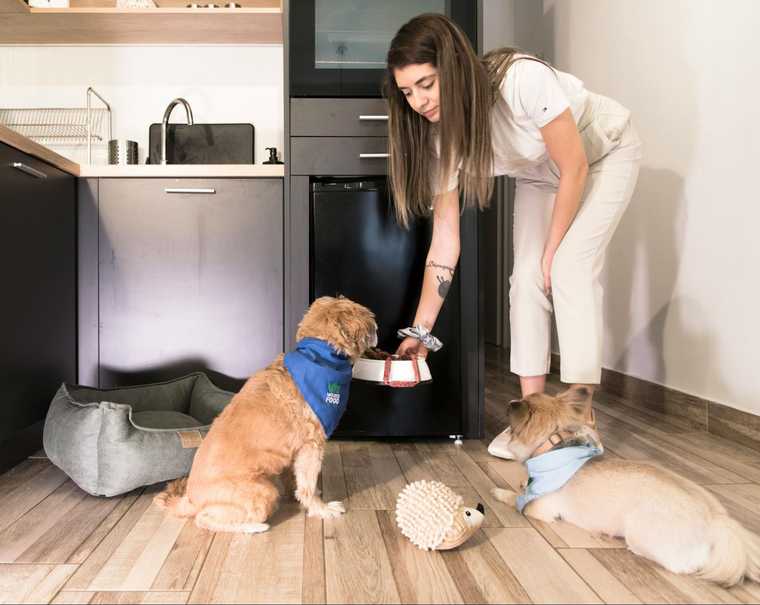
However, it’s worth mentioning that some whining is merely a communication tool. If your dog whines to inform you that it’s time for a potty break, the sounds serve a practical purpose, and such behavior shouldn’t be ignored. The same applies to whining when your dog is sick or scared.
If you’re sure your dog is whining to satisfy a basic need (food, water, potty breaks) or communicating pain or fear, always respond to it. In other cases, it's better to ignore the whining behavior and work on ways to enrich your pet’s life experiences or teach them to stay quiet on command.
Wrap Up
Whining is your dog’s way of telling you they’re bored, scared, anxious, overexcited, or need your attention. Depending on the cause and how excessive the behavior is, you can teach your dog not to whine. The key to tackling the behavior is to ignore them when they’re whining to get attention. Stay calm and patient in the process, and you’ll succeed in breaking the habit!
